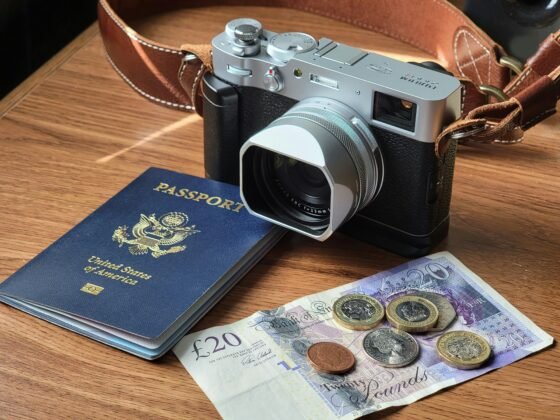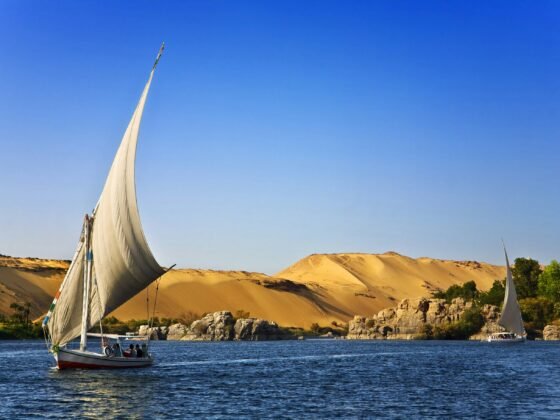Pakistan Adventure Travel Guide: Ideas and Inspiration
PureTravel Says: "Pakistan is the most underrated country in South Asia. While India has become the destination for the cultural visitor and Nepal for the outdoor lover, Pakistan has remained little explored and largely overlooked. The home of the Indus civilization, whose settlements date back to 2,500 BC, it has been a melting pot of cultures ever since. With influences arriving from Central Asia, Persia and India through waves of successive conquerors, settlers and traders, Pakistan is a modern name for a patchwork of fascinating cultures. Add to this the fact that it is the home of the most dramatic mountain scenery in the world, and some of the greatest peaks on earth, it is more than worth a visit."
-----------------------------------------------------------
Holiday Highlights
Walking & Trekking – As you would expect from the country boasting some of the highest mountains in the world, Pakistan is a trekker’s dream. There are challenging high-altitude treks such as the walk to K2’s base camp, the second highest mountain in the world and one of the hardest climbs. There are small trekking peaks that can be done by those with only basic mountain climbing skills. There are treks and day walks in some of the prettiest mountain scenery on earth. From Skardu in the Karakoram Range. Near Nanga Parbat in the Himalayan range. In Chitral for the Hindu Kush and in Hunza for the ultimate mountain scenery.
Culture & History – From the Indus Civilization of 2,500 BC – the first culture to include water and sanitation in its cities, through the legends of Alexander the Great, to the rule of the Moguls and the British, every visitor, conqueror, trader or settler has left its make on Pakistan. Blessed with fertile land watered by the Indus River and crossed by the Silk Road that connected East with West for centuries, it has through the ages attracted the eyes of those around and this can be seen today in the rich material remains left behind. Buddhist temples, beautiful mosques, ruined cities, mighty forts and colourful bazaars are all there to be discovered by the modern visitor.
Rafting – Although rafting is a relatively new activity in Pakistan, its rivers are ideal for the pastime. Many of the specialist agencies have their bases in the mountain town of Gilgit, high in the mountains and a 2-day drive from Islamabad. Here is the confluence between the Gilgit and Indus rivers, giving a wealth of choice for trips. The difficulty ratings tend to be high, as the rivers are fast and furious.
Adventure Tours – Combine the above and you have the basis for a fantastic adventure. Throw in the chance to experience a desert, follow the Silk Road through the mountains to China or search for the elusive Snow Leopard and you have an adventure destination with something to offer everybody. There are several styles of travel. By minibus so you may visit the lowlands and deserts in more comfort. By jeep to explore the mountains and valleys, many areas of which are only accessed by bumpy tracks. Explore the desert on foot or by camel to trek the myriad of hills.
-----------------------------------------------------------
When To Go
The mountain activities are good between June and September. As much of the mountain areas are at high altitude there is a lot of snow during the rest of the year making the passes and many of the valleys impassable. In some of the lower valleys, such as Swat and Hunza, it is possible to travel in April – May and October. Indeed these can be some of the most picturesque times, with either colorful blossom in the spring and rich autumnal colours in the autumn.
Jeep safaris, rafting and trips up the Karakoram Highway are also advised for these months for much the same reasons. In winter the roads can become impassable or are simply washes away.
The low land areas, from Islamabad and Lahore southwards can be visited throughout the year. They are hot throughout the year.
-----------------------------------------------------------
Top Tips
- Never travel by yourself in the mountains. Use a local specialist tour operator whose local knowledge will be invaluable.
- Be respectful of local customs.
- Check with the latest Government travel advice about places NOT to travel into.
-----------------------------------------------------------
Holidays In Focus
-----------------------------------------------------------
Walking and Trekking
The most famous mountain in Pakistan is K2, otherwise known as Mount Godwin-Austen or Chogori, the Balti language name meaning “Big Mountain”. It is the second tallest mountain in the world and regarded as one of the hardest high-altitude climbs in the world. One of the most popular treks is the Concordia trek. This takes you to the Base camp of K2, a conjunction of glaciers called Concordia and with perhaps one of the most spectacular mountain scenes in the world. It is a tough trek with much of the walking being on the Baltoro glacier itself.
The whole Karakoram Range offers excellent trekking. The Masherbrum trek is an easier option in the range, visiting high passes as well as smaller mountain villages and high altitude pasture. For the experienced trekker there is the Hispar-la and Snow Lake trek. This trip climbs over high passes and brings you from the Baltistan area through to the Hunza region. It is remote and rugged, leaving all habitation behind and travelling through stark scenery. It is so remote it is still home to the elusive snow leopard.
Pakistan offers more than just the Karakoram Range. It is home to a large swathe of the Hindu Kush, centered around the main peak of Tirish Mir, itself 7,500 m high. The Chitral Valley, a remote town near the Afghanistan border is the starting point for this, often ending in the neighboring province of Gilgit. There is the peak of Nanga Parbat, the western-most bastion of the Himalaya chain, famous for its beautiful meadows and dramatic views.
Hidden up in the very north of the country is the Hunza valley, described by the explorer Eric Shipton as “the ultimate manifestation of mountain grandeur.” Here it is possible to do some great trekking, varying from gentle day walks from the comfort of the small hotels in the main villages, to some excellent camping trips. The peak of Rakaposhi dominates the valley and as you head off towards the Chinese border there are some remote and beautiful side-valleys such as Shimshal.
-----------------------------------------------------------
Culture and History
The Indus Civilization, dating from 2,500 BC, ran for over 1,000 years and has amazed archaeologists with the sophistication of its culture. It a type of writing, it covered (and took its name from) the flood plains of the Indus River. The two greatest cities, Harappa and Moenjodaro, sat in the heartlands of this area, the former being to the north of the empire in modern-day Punjab. These cities have evidence of detailed town planning with water and sewage systems. There is evidence of extensive trade links with surrounding cultures. These, as well as many outlying sites can be visited on many cultural tours.
Moving forward in time, we come to the stories of the conquests of Alexander the Great, whose great campaigns finished at the Indus River. Legend has it that some of his armies stayed and settled here, their descendants still surviving in the remote Kailash Valleys in Chitral, Western Pakistan. The Kailash people live here practicing completely different traditions to their neighbours. They are pale skinned and often with blue eyes. The women go unveiled and their traditional beliefs have tenets that could ring on from the Greek gods of old. To visit them a jeep safari is required, as the area is remote and the roads little more than rough tracks.
The Great Mogul empire than ruled India in the 15th-17th Centuries has also left its mark, most notably in the city of Lahore which in those days was one of the most important centers. It is home to a large Red Fort as well as mosques from that period. Its history goes back much further than this however, with references in the ancient works of Ptolemy referring to it.
The mountain Kingdom of Hunza, still ruled over by a local Mir, is a fascinating place to visit. Its people are renowned for living to 120, mainly thanks to the local diet rich in fruit from orchards irrigated with melting snow. Hunza apricots are famous throughout the world. Other local specialties include a fruit wine and a special butter, eaten only when it has been buried in leaves under running water for several years. Once situated on the famous Silk Road, the valley is dotted with small forts and fortified houses from where the Mir could tax the caravans that used its precipitous roads. Now it is (a little) easier) to visit and is a favourite stopping place en route to China.
The Karakoram Highway is the name given to the road, built in the 1970’s and 80’s that links Islamabad to China. “Highway” is a rather grand name for a road – in places little more than a single-lane track that for much of its route clings to the banks of the Indus River Valley. It is an incredible achievement and is kept open despite frequent landslides that fall onto it. To drive from Islamabad to the Chinese Oasis town of Kashgar takes 4 days of driving and takes you through a kaleidoscope of landscapes that few journeys can match. Fertile foothill valleys, around the mountain Nanga Parbat, incredible views of the Indus River, The mountain Kingdom of Hunza, High passes covered in snow, the high altitude stone desert of the Pamir mountains, the desert plains and finally the Oasis town of Kashgar.
-----------------------------------------------------------
Adventure
Often the only way to get around, safaris by jeep make for an unforgettable adventure. Many of the mountain valleys can only be reached by jeep. Others, like Chitral, Swat and Hunza, need jeeps to explore off the beaten track and see worlds hardly changed in centuries. Jeeps can climb mountain passes, such as the Shandur Pass between Gilgit and Chitral, which lets you explore more than one culture. Time your trip right and you can witness one of the great spectacles of Pakistan – the annual polo match between Chitral and Gilgit, played on top of the Shandur pass at 12,000 ft. You will be amazed how many make the long climb to support their team.
-----------------------------------------------------------
Classic Itineraries
- The Concordia trek: Trek to K2 Base Camp.
- Masherbrum Trek: Easier trek in the High Karakoram.
- The Silk Road: Classic Adventure Tour from Islamabad, through the mountains to Kashgar in China.
-----------------------------------------------------------
UNESCO World Heritage Sites
- Archaeological Ruins at Moenjodaro
- Buddhist Ruins of Takht-i-Bahi and Neighbouring City Remains at Sahr-i-Bahlol
- Taxila
- Fort and Shalamar Gardens in Lahore
- Historical Monuments at Makli, Thatta
- Rohtas Fort
-----------------------------------------------------------
Travel Resources
By Julie Bowman










